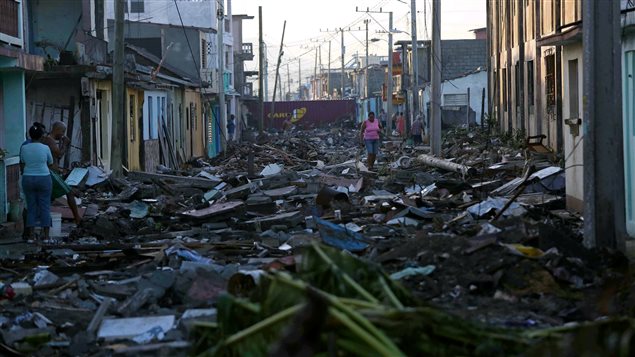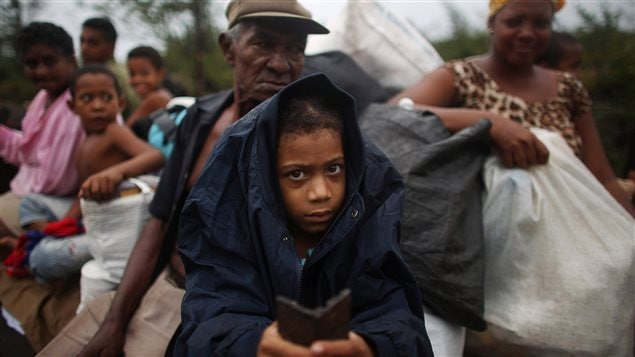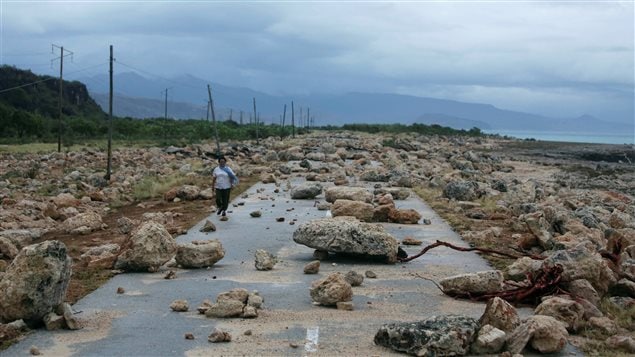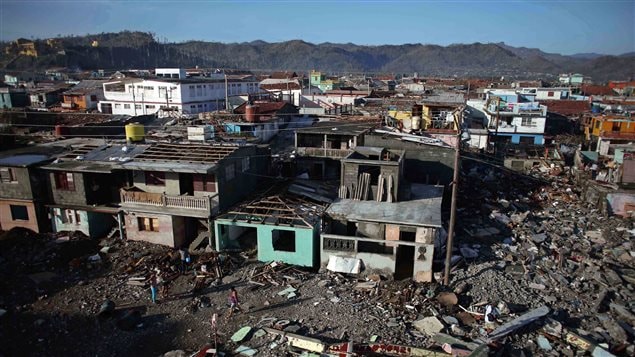While much of the world attention in the aftermath of Hurricane Matthew has been focused on the deadly path it cut in Haiti, authorities in neighbouring Cuba, which was also walloped by the strongest storm to hit the Caribbean in nearly a decade, are also struggling to rebuild.
The hurricane hit the eastern tip of Cuba and caused considerable damage in Baracoa, Imias, San Antonio and Maisi, said Richard Paterson, CARE’s country representative in Cuba.
(click to listen to the interview with Richard Paterson)
ListenHeavy rains, hurricane force winds, as well as storm surges along the coast damaged infrastructure, housing, schools and hospitals, flooded and washed away agricultural fields and plantations, Paterson said.
Cuba’s easternmost city of Baracoa bore the brunt of Matthew’s fury. Houses located on the shoreline were completely destroyed by sustained winds of up to 250 km/h, with gusts of up to 300 km/h, pushing waves that were several meters high.

Upwards of a million people fled to safety from the areas along the path of the hurricane.
“Fortunately there have been no fatalities but it also means that there are hundreds of thousands of people who have had their homes damaged, homes destroyed, they’ve lost their roofs or they’ve lost their livelihoods because of the damage to agriculture,” Paterson said.
CARE has dispatched a team of two people to assess the damage on the ground in eastern Cuba, he said. They are working with partner organizations and local government officials to try to get a sense of the extent of the damage, Paterson said.
Hundreds of thousands of people are still in temporary shelters, he said.
“As they begin to return home, they will need food, support for drinking water and also some basic household items in order to re-establish some semblance of normal existence,” Paterson said.

People also need help to repair their homes, reconstruct their roofs that in many cases were blown away by winds, as well as restore the road infrastructure and public facilities, he said.
The government has been dedicating a considerable effort to restoring communications and now virtually all of the affected regions are accessible by road, Paterson said.
“CARE has developed a specific strategy to respond to Hurricane Matthew,” Paterson said. “It involves helping families to ensure that they have access to safe water, hygiene and sanitation items, as well as working on roof reconstruction.”
Longer term efforts would need to focus on development, he said.
But the Cuban government, whose efforts to evacuate the most dangerous areas in the path of Matthew averted loss life, will likely need international help to quickly rebuild the hardest hit areas. Cuba’s economy is suffering from the impact of the crisis in its chief ally Venezuela as well as low global commodity prices.








For reasons beyond our control, and for an undetermined period of time, our comment section is now closed. However, our social networks remain open to your contributions.